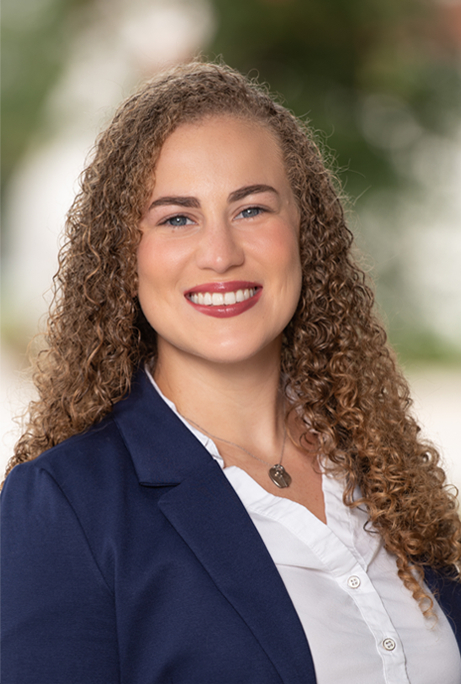Remember the Intoxilyzer 8000 Study in Which FDLE Employees Were Paid to Get Drunk?

The “independent” scientific study on the Intoxilyzer 8000 conducted at the Florida Department of Law Enforcement (FDLE) in October of 2011 reads like a script from that TV show “Reno 911!” that ran on Comedy Central.
Why did FDLE throw together this bizarre “scientific” study that involved 3 days of planning?
The study involved buying a lot of alcohol and Doritos and getting FDLE employees drunk. The FDLE employees then blew on three Intoxilyzer 8000 machines which had the “flow sensor” calibrated either too high, too low or just right.
The media had a field day asking if the study was a waste of taxpayer money. Obviously, Laura Barfield, the head of FDLE’s alcohol testing program knew that any study (even one this ludicrous) would pass the laugh test in front of Florida judges who bend over backward to keep the machines online and the results in front of unsuspecting jurors.
Why Throw Together the “Study” that was Planned in Three Days and Cost $8,000?
FDLE was worried because DUI defense attorneys throughout the State of Florida were finding evidence that many of the breath volume readings for their client’s were completely inaccurate. It turned out that FDLE never bothered to calibrate the way the Intoxilyzer 8000 estimated “breath volume.” According to the administrative rules, a sufficient sample required 1.1 liters of breath being blown into the breathalyzer in one continuous breath. But many of the readings were saying that the subject blew 4, 5, 6, even 13 liters of breath in one continuous blow which was impossible. Right next to that “breath volume reading” was the “breath alcohol concentration” reading (often called the BrAC result).
So if the volume reading was clearly wrong, how could we rely on the BrAC result. A BrAC result of more .08 can result in a DUI conviction even when all the other evidence in the case indicates that driver was not impaired. Clearly, innocent people were being convicted of DUI because FDLE wasn’t properly calibrating the machines.
So FDLE threw together the study in three days, shelled out $330 on a variety of “top shelf” alcoholic beverages, bought some Doritos and other party snacks, and got 15 FDLE employees drunk on the clock. Can you believe they had a video camera recording the study? No word on when that will be released. The total cost for the study was estimated to be $8,000. The media’s attention on whether the study was a waste of taxpayer money really missed the point.
The Circumstances Surrounding the Study Shows that the Intoxilyzer 8000 Is Neither Accurate Nor Reliable
Why wasn’t the instrument being properly calibrated in the first place? Why did FDLE attempt to hide the problem until DUI defense attorneys and their expert witnesses across the State were able to compile a sizable amount of evidence that proved the problem existed. Why wasn’t FDLE conducting a real independent scientific study to learn more about the extend of the problem instead of conducting this comical, most unscientific, and completely not independent charade. Why are we trusting FDLE to just make up the rules for calibrating the “flow sensor” without any administrative rules or objective standards?
Most importantly, problems with the flow sensor explained why certain Intoxilyzer 8000 instruments had a higher number of “Volume Not Met” or VNM readings. In those cases, the person who tried to blow into the machine was accused of not submitting a sufficient sample which became infinitely more difficult when the flow sensor calibration was too low. Many of those individuals were also falsely convicted of DUI not because they “refused” to submit a sufficient sample of 1.1 liters of air but because the machine could not properly recognize that a sufficient sample had been submitted. The study does absolutely nothing to address that problem.
Florida’s Intoxilyzer 8000 Pressure Transducer Calibration Study Concluded- “Move Along, Nothing to See Here.”
The report is entitled “Intoxilyzer 8000 Pressure Transducer Calibration and Its Lack of Effect on the Accuracy and Reliability of Breath Test Results.” The report is dated October 24, 2011. It purports to be an “Independent Research Study” conducted by John Dell’Aera and John Brigandi with a mysterious organization called “Drug and Alcohol Research, New York.” A quick Google search leads me to conclude that John Dell’Aera might be the current or former Technical Supervisor of the Nassau County Police Department. Google apparently knows very little about John Brigandi or “Drug Alcohol Research, New York” other than what FDLE has published on the topic. [11/26/12 – Update: Looks like John Brigandi is a Nassau County Police Officer with the Central Breath Testing Center]. Are employees of the Nassau County Police Department able to establish companies like “Drug and Alcohol Research, New York” in order to get paid by FDLE for a sham scientific study?
How in the world can you call this an independent study? Who in the room was independent? Not Laura Barfield who selected the three Intoxilyzer 8000 instruments that were used in the “study.” I’ve also heard that Laura Barfield collected the breath test slips and other evidence used in the study. Not the FDLE employees who were the participants who were paid to get drunk and eat Doritos on the clock. Not the other observes listed in the “Acknowledgement” section of the study who are all FDLE employees or law enforcement officers.
Now that we know that FDLE made no attempt to calibrate the “flow sensor” or “pressure transducer” on Intoxilyzer 8000 instruments used throughout the State, FDLE has a big problem. If the breath volume reading is wrong because “pressure transducer” is reading too high or too low then how do we know whether the Breath Alcohol Concentration (often called the “BrAC” result) estimated by the machine is correct? What do we do with all the people falsely accused of “refusal” after blow a sufficient sample that the Intoxilyzer 8000 read as “Volume Not Met”?
FDLE Employees Get Drunk on “Top Shelf” Alcoholic Beverages and Premium Party Snacks
My favorite part of the report concerns the “types of snacks provided” and “dosing of subjects.” The report provides:
While dosing occurred, the test subjects were provided light snacks, which consisted of chips, pretzels, nuts, crackers, cheese and pepperoni….. Test subjects were dosed with known quantities and concentrations of alcohol. The following types of alcohol were available for dosing of the test subjects:
Three (3) 1.75 Liter Bottles of 80 Proof Stolichnaya Vodka (40% alcohol);
Two (2) 1.75 Liter Bottles of 80 Proof Bacardi Rum (40% alcohol);
One (1) 1.75 Liter Bottle of 70 Proof Captain Morgan Rum (35% alcohol);
Three (3) 1.75 Liter Bottles of 80 Proof Jim Beam Bourbon Whiskey (40% alcohol);
One (1) 750 mL Bottle of 80 Proof Jose Cuervo Oro Tequila (40% alcohol); and
One (1) 1.75 Liter Bottle of 80 Proof Jose Cuervo Gold Tequila.All alcohol was measured by the ounce using a measuring cup. Alcohol was then mixed with the following mixers based on the subjects choice….
The report goes on to state that “[n]ot all alcohol listed above was consumed during this study” which begs the question, “Who took home the extra booze?” Likely suspects include those who supervised the study and were named in the “acknowledgments” for their assistance including FDLE employees Laura Barfield, Jennifer Jacos, Jake Shanahan, Kristen Shipp and Phillip Suber. Trooper Susan Barge, with the Florida Highway Patrol and Deputy Sandra Chessher, with the Lake County Sheriff’s Office were also present. Funny that the “acknowledgements” doesn’t reference anyone not associated with FDLE or law enforcement.
Conclusions from Florida’s Intoxilyzer 8000 Calibration Study
So what did John Dell’Aera and John Brigandi with the mysterious company named “Drug and Alcohol Research, New York” conclude after receiving their $8,000 payment? The abstract of Florida’s Intoxilyzer 8000 study provides:
The calibration of the pressure transducer, commonly referred to as the flow sensor, in the CMI, Inc. Intoxilyzer 8000 was studied to determine its effect on the accuracy and reliability of breath alcohol test results. Fifteen (15) test subjects were dosed with alcohol in various concentrations between .05 and .011 g/210L, ad submitted to a breath test on three (3) different Intoxilyzer breath test instruments:
one had the pressure transducer calibrated properly[;]
one had the pressure transducer calibrated high[;] and
one had the pressure transducer calibrated low.The breath test consisted of obtaining a minimum of two (2) breath samples, the results of which had to agree within .02 g/210L of each other. Subsequent to the three (3) breath tests, each test subject also submitted to a blood tests and had a venous blood sample drawn for analysis. The average results of the breath alcohol concentration and breath volume readings were as follows:
(1) On the instrument with the properly calibrated pressure transducer — 0.084 g/210L (range 0.054 to 0.116 g/210L) and 2.974 liters (range 1.503 to 4.910 Liters) respectively;
(2) On the instrument with the pressure transducer calibrated high — 0.082 g/210L (range 0.052 to 0.111 g/210L) and 2.048 liters (range 1.382 to 2,976 Liters) respectively; and
(3) On the instrument with the pressure transducer calibrated low — 0.081 g/210L (range 0.053 to 0.118 g/210L) and 13.42 Liters (range 7.47 to 17.58 Liters) respectively.
Based on the results of this study, the calibration status of the pressure transducer, whether it is proper, high or low, does not affect the accuracy and reliability of the breath alcohol test results obtained.
So does this study restore your faith in Florida’s Intoxilyzer 8000? Would you call the study “independent?” If you want a good laugh then pour yourself a stiff drink and a bowl of Doritos. Check here to read the study in its entirety – Intoxilyzer 8000 Pressure Transducer Calibration and Its Lack of Effect on the Accuracy and Reliability of Breath Test Results.
Leslie Sammis is a DUI attorney with offices in Tampa, FL. Special thanks to Stephen Daniels with DUI Undo Consultants, LLC, who provided us with a copy of the study.
3 comments
Comments are closed.
Free Consultation
Submit this form to request a free and confidential consultation with one of our attorneys.
Our Office Locations
Tampa Office:
Sammis Law Firm, P.A.
1005 N. Marion St.
Tampa, FL 33602
(813) 250-0200
New Port Richey Office:
Sammis Law Firm, P.A.
7509 Little Rd.
New Port Richey, FL 34654
(727) 807-6392
Clearwater Office:
Sammis Law Firm, P.A.
14010 Roosevelt Blvd. #701
Clearwater, FL 33762
(727) 210-7004







The media coverage on the Intoxilyzers and this study is incredibly unfortunate. The media should not let the FDLE shift the attention away from the real problems with Intoxilyzer 8000s by making a joke out of themselves.
Did anyone find out if the organization even exists a
and if it does not does this reflect on the credibility of the two Johns. Is there really an organization by this name?
Thanks for sharing this insightful article on the Intoxilyzer 8000. I would have to disagree, however, with your characterization of Bacardi as being “top shelf” liquor! All joking aside, keep up the great work!